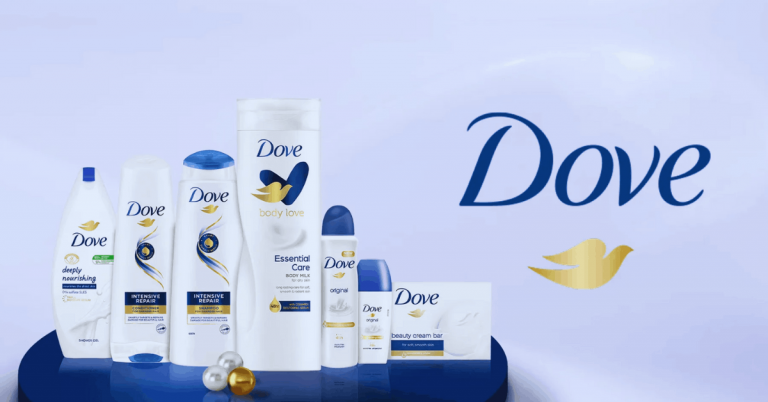Continuous sales strategy improvement is a non-negotiable imperative in the dynamic business realm.
In the next seven weeks, we will guide you through a targeted plan to improve your sales strategy, providing you with the essential tools and techniques to boost your performance and confidently reach your sales goals.
Week 1: Setting the Foundation
A successful sales strategy comprises three key components:
- Target Audience Understanding: Thorough knowledge of your audience’s needs, preferences, and pain points.
- Value Proposition: A compelling and unique value proposition that addresses customer pain points.
- Effective Sales Techniques: Implementing proven sales techniques and processes for converting leads into customers.
How to Assess the Current Sales Strategy and Identify Weaknesses
Assessing your current sales strategy is essential for ongoing improvement and growth. Here’s a concise guide on how to evaluate your strategy and uncover weaknesses:
- Review Sales Performance Metrics: Examine KPIs to gauge strategy effectiveness.
- Gather Customer Feedback: Collect feedback to understand satisfaction and needs.
- Competitive Analysis: Analyze competitors for strategy insights.
- Sales Team Input: Consult the sales team for frontline perspectives.
- Technology Assessment: Evaluate tools for streamlined sales processes.
- Market Trends: Stay updated on industry and customer trends.
- SWOT Analysis: Conduct a SWOT analysis for strategy evaluation.

Week 2: Target Audience Analysis
Creating buyer personas is crucial for understanding your target audience and tailoring your sales strategy effectively. Here are five steps to help you navigate the process:
- Research and Data Collection: Collect your existing customers’ demographic, psychographic, and behavioral data.
- Identify Common Traits: Analyze the data to identify patterns and shared characteristics among your customers.
- Segment Your Audience: Group your customers into segments based on shared traits and preferences.
- Persona Creation: Develop detailed personas for each segment, including names, job titles, pain points, goals, and preferred communication channels.
- Refinement and Validation: Continuously refine your personas based on new data and validate them with honest customer feedback to ensure accuracy.
Guidance on Gathering Market Research and Competitor Analysis
Here are five brief guidelines for gathering market research and competitor analysis:
- Utilize Online Resources: Explore online databases, industry reports, and market research tools to gather market data.
- Customer Surveys: Conduct surveys to collect insights directly from your target audience regarding their preferences and pain points.
- Competitor Analysis: Study competitors’ websites, social media, and customer reviews to understand their strengths and weaknesses.
- Industry Events: Attend conferences, trade shows, and webinars to stay updated on industry trends and competitor activities.
- Collaborate with Experts: Seek advice from industry experts, consultants, or market research professionals to gain deeper insights.
Week 3: Crafting a Compelling Value Proposition
Creating a distinctive and persuasive value proposition is crucial for attracting your target audience and distinguishing your offerings. Here are the steps to help you develop a compelling value proposition:
- Understand Your Audience: Begin by deeply understanding your target audience’s needs, desires, and pain points.
- Identify Your Unique Selling Points: Determine what sets your product or service apart from competitors and why it matters to your audience.
- Define the Value You Offer: Clearly articulate the specific benefits and solutions you provide to address your audience’s challenges.
- Keep It Clear and Concise: Express your value proposition briefly and straightforwardly, avoiding jargon or complex language.
- Test and Refine: Continuously refine your value proposition based on customer feedback and market dynamics to ensure its effectiveness.
Examples of Effective Value Propositions
A compelling value proposition is at the heart of successful marketing and sales efforts. Here are some examples of clear value propositions that have resonated with customers:
- Apple: “Think different.”
- Airbnb: “Belong anywhere.”
- FedEx: “When it absolutely, positively has to be there overnight.”
- Amazon: “Earth’s biggest selection.”
- Tesla: “To accelerate the world’s transition to sustainable energy.”
These examples showcase how a concise and impactful value proposition can convey a brand’s unique benefits and resonate with its target audience.
Week 4: Building a Sales Team
Recruiting, training, and motivating sales professionals are vital to any successful sales strategy. Here are a few tips that cover these crucial areas comprehensively:
Recruiting:
- Define Ideal Profiles: Clearly outline necessary skills and traits.
- Referral Program: Encourage employee referrals for potential candidates.
- Structured Interviews: Use consistent questions for fair assessments.
Training:
- Customized Training: Tailor programs to your industry and products.
- Role-Playing: Simulate sales scenarios to enhance skills.
- Continuous Learning: Provide ongoing training to stay updated.
Motivating:
- Clear Sales Targets: Set achievable and rewarding goals.
- Recognition and Rewards: Acknowledge top performers with incentives.
- Supportive Culture: Foster a positive workplace environment.
These tips cover the essential aspects of effectively recruiting, training, and motivating sales professionals.
Week 5: Sales Funnel Optimization
Optimizing every stage of the sales funnel is vital for maximizing conversions and revenue. Here are five strategies to improve each phase:
- Awareness Stage: Invest in content marketing and social media to attract a broader audience to your website.
- Interest Stage: Create informative and engaging content to educate prospects and build interest in your products or services.
- Consideration Stage: Implement lead nurturing campaigns and personalized communication to guide prospects toward a purchasing decision.
- Decision Stage: Provide clear product information, reviews, and incentives to encourage prospects to purchase.
- Action Stage: Simplify the purchasing process and offer excellent customer support to ensure a smooth transition from prospect to customer.
Effective Funnel Management Tools
Effective funnel management is crucial for optimizing your sales process. Here are five tools and technologies that can significantly assist in streamlining and improving your funnel management:
- CRM Software: Salesforce, HubSpot, and Zoho CRM track leads and automate sales.
- Marketing Automation: Marketo, Pardot, and Mailchimp automate campaigns and lead nurturing.
- Analytics Tools: Google Analytics, Mixpanel, and Kissmetrics offer user insights.
- Funnel Visualization: ClickFunnels and Funnelytics design and analyze funnels.
- CRO Tools: Optimizely, VWO conducts A/B tests for better conversions.
Week 6: Sales Techniques and Closing Deals
Sales techniques are essential for converting leads into customers and closing deals successfully. Here’s a list of various sales techniques and their applications:
- Consultative Selling: Focuses on understanding customer needs and offering tailored solutions.
- Relationship Selling: Builds trust and long-term relationships with customers.
- Challenger Selling: Challenges customers’ preconceptions to introduce new solutions.
- Solution Selling: Presents products or services as solutions to specific problems.
- Social Selling: Utilizes social media to connect with and engage potential clients.
Tips on Effective Negotiation and Closing Deals
Effective negotiation and closing deals are essential skills in sales. Here are five tips to help you excel in these essential aspects of the sales process:
- Prepare Thoroughly: Gather information about the prospect, their needs, and potential objections before entering negotiations.
- Active Listening: Pay close attention to the prospect’s concerns and interests during the conversation.
- Offer Value: Focus on communicating your product or service’s unique value to the prospect.
- Address Objections: Anticipate and address objections transparently and convincingly.
- Close with Confidence: Use closing techniques like the assumptive close or trial close to prompt a favorable decision from the prospect.
Week 7: Monitoring Progress and Continuous Improvement
Monitoring progress and continuously improving your sales strategy are critical for long-term success. Here’s a discussion in a listed form:
- Performance Metrics: Regularly track and analyze KPIs to assess strategy effectiveness.
- Feedback Collection: Gather feedback from customers and the sales team to identify areas for improvement.
- Regular Reviews: Conduct periodic strategy reviews to identify bottlenecks and inefficiencies.
- Data-Driven Decisions: Use data and insights to make informed adjustments and stay aligned with market trends.
- Competitor Analysis: Continuously assess your strategy compared to competitors and industry best practices.
Conclusion
In conclusion, this 7-week journey to enhance your sales strategy is vital to significant improvement.
Applying the strategies outlined can boost your sales performance and propel your business toward success. Stay focused and watch your strategy evolve into a powerful tool for growth.












